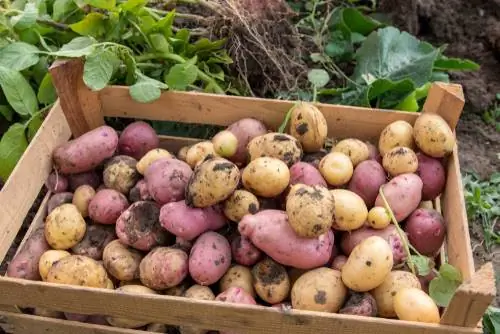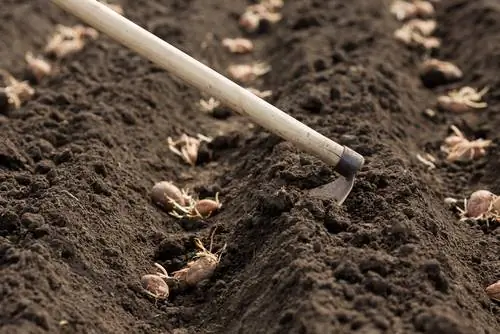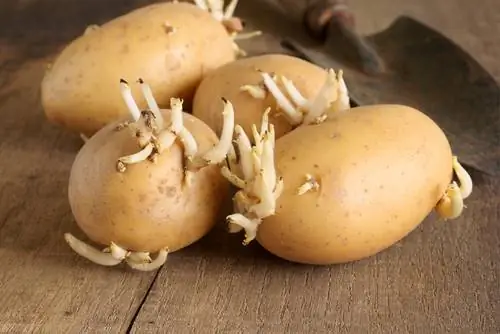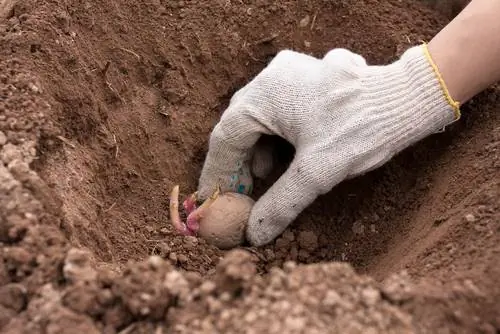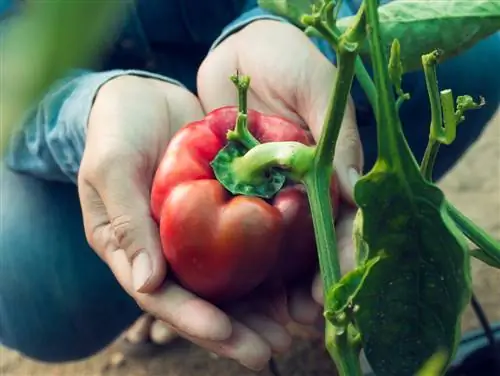- Author admin [email protected].
- Public 2023-12-16 16:46.
- Last modified 2025-01-23 11:21.
The best thing about new potatoes is the early harvest. Of course, the taste of the tender tuber is also convincing, which cannot be compared to specimens stored for a long time over the winter. It comes particularly fresh from our own garden. This is how we harvest!
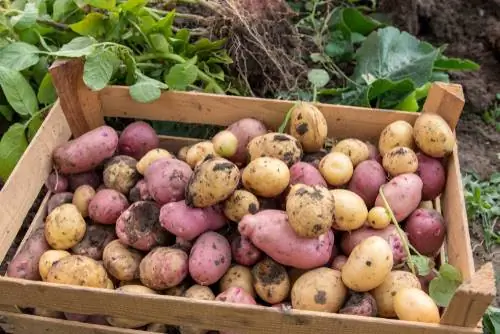
When and how should you harvest early potatoes?
New potatoes should be harvested when the foliage wilts and turns brown. Pay attention to the ripening times depending on the variety (June to August) and use a digging fork or special potato hoes to harvest so as not to damage the tubers or forget them in the ground.
Wait for maturity
So that both the taste and the size of the tubers are right, you should plan the optimal harvest time. As long as the potato plant is blooming or is still lush green above the ground, starch is still being stored in the tubers.
- only harvest when leaves are wilted and brown
- best in portions as needed
Variety-dependent ripening times
There are countless varieties of early potatoes, each of which differs in its ripening time. This is somewhere between 70 and 120 days. A rough distinction is made between three types:
- very early varieties are harvested from June
- The early varieties will follow from July
- mid-early varieties are taken out of the bed at the end of August
Harvesting tools
When harvesting, no tuber should be left in the ground if possible. The harvested tubers must not be damaged so that they can be stored longer. A digging fork (€31.00 on Amazon) or special potato hoes are suitable harvesting devices. They can be easily pierced into the soil in order to then lever out the tubers.
Harvest process
The tubers are formed under the main shoots of the plant. They can be easily found by searching the soil around the plant within a radius of 50-60 cm.
- first remove the dried herb
- then insert the digging fork into the side
- Take out tubers
- remove coarse soil residue
- collect in potato crates
Tip
If you cannot eat the potato tubers immediately, you should not wash them immediately after harvesting. If there is still moist soil clinging to them, allow them to dry thoroughly before storing.
Try the first tubers
If you are impatiently waiting for the first potato tubers of the year and suspect that there are some underneath your potato plants, you can carefully go on a “treasure hunt”. Carefully remove the soil from the side of the root area until you come across tubers.
You can carefully separate large specimens from the plant. Then cover the root area again with soil so that any remaining tubers can continue to grow.

